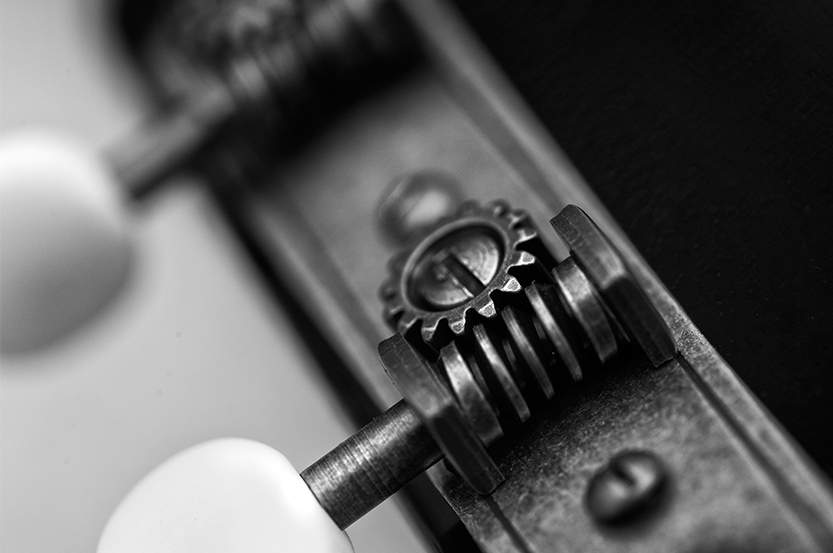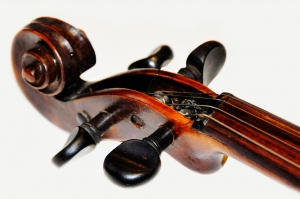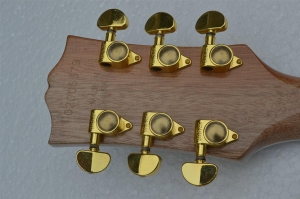
Those windy-turny things near the top of your guitar that adjust the strings. Yah, those are your tuning pegs and you use them all the time to keep your instrument in tune. Have you ever wondered though, if the ones you have now are the best for your guitar?
One of the main benefits of learning the basics about tuning pegs; is that many guitars are shipped from the factory with cheap tuners. It can mean that even when you tune up properly, your guitar might not stay in tune very well while you play.
A simple upgrade of your tuners can make a vast difference; it’s one of the first things I recommend doing with a new guitar. Here’s how to tell the difference between types of tuning pegs.
Friction pegs
In the world of classic stringed instruments like violins, everyone started out with what we call friction pegs.
The string wraps around the peg and the friction between the peg and the instrument holds it in its place. Too much friction and you can’t turn the peg, not enough friction and your string won’t stay in tune. To this day as a matter of tradition and style, most orchestral stringed instruments stick with friction pegs. Because they’re lightweight and simple, you’ll also find them on ukuleles.
Geared pegs
Tuning pegs leaped ahead in technology and guitars are one instrument that ran with these new kinds of tuners, using them to their full potential. Geared pegs work as a cylinder mounted to a pinion gear that tightens or loosens the string wrapped around it as you adjust the tuner knob.
Geared pegs also work on a variety of different ratios. 11:1 for instance would offer a nice level of precision, whereas 18:1 would be far more precise as you turn the peg. The higher the number, the slower the rotation for each turn.
One more thing, if you have a whammy bar on your guitar there are geared pegs with locking mechanisms to clamp down on those strings while you get crazy doing dive bombs in your soaring leads.
Consider this
If you’ve decided to upgrade to a new set of pegs, keep in mind that it’s not a “one size fits all” job.
Make sure to get tuners that match the holes already in your guitar’s headstock, otherwise you’ll need to bring them to your friendly neighborhood guitar repair shop for a custom install.
For more information check out our new and improved complete guide to guitar tuning!



